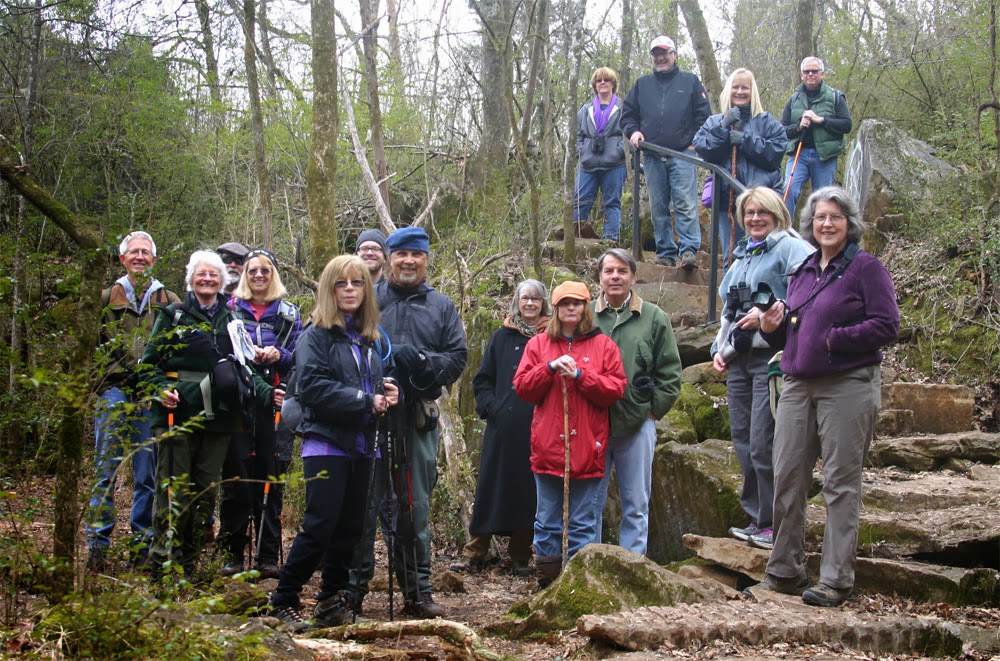Piece-by-Piece is the name of a series of hikes scheduled monthly by Ijams Nature Center, and led by naturalist, Stephen Lyn Bales. These hikes will traverse the South Loop of Knoxville's Urban Wilderness Trail in 2-3 mile sections.
Saturday, Feb 8th included the Ross Marble Quarry Natural Area, an area of natural limestone deposits, quarried by the Ross Marble Company beginning in 1881. The area is an interesting combination of large quarried limestone block, some stacked into towering walls, and nature's gradual reclaiming of the area. The marble produced here was not true marble but a crystalline limestone that polished easily and had an attractive pinkish-gray appearance. It became known as Tennessee Marble and has been highly favored for use in buildings and monuments in Tennessee, New York and Washington. DC. Above, an area of slag deposits, the "ashes" created from a lime kiln used to convert broken chunks of limestone into agricultural lime powder. As the slag area is reclaimed by nature, it supports cedars that favor its alkaline quality.
A system of caves runs under the limestone deposits in this area and provides habitat for the endangered Berry Cave Salamander (Gyrinophylus gulolineatus). Several species of bats are also known to roost in these caves which are gated to protect wildlife.
Lyn, a master naturalist, turned over some leaves in the pond to demonstrate how you can generally find salamanders and recognize salamander eggs during breeding season. A talented story teller and author of two books and numerous articles, he shared some tales of frogs and salamanders from his years growing up in the Smoky Mountains.
Further down the trail we explored the Keyhole "wall" at the Ross Marble Quarry, below. At the top of the wall you can see railing that was installed to offer a safe crossing as you continue on the trail.
The limestone desposits that included the prized industrial grade limestone sold as Tennessee marble in the area are part of the underlying Holston Formation that passes through the 300-acre Ijams property.
You can walk through the keyhole to explore the other side. The images immediately above and below were taken at a different time of year and show the proportional size of the keyhole feature.
On our return to the trail head, we hiked along the ridge with a distant view of the Smokies on one side and blocks of limestone on the other.
Links and Resources:
Tennessee Marble
Ijams Nature Center
Stephen Lyn Bales--Nature Calling
Marble Quarry Map
Piece-by-Piece--Urban Wilderness South Loop
Knoxville's Urban Wilderness
Legacy Parks Foundation--Knoxville's Urban Wilderness hike descriptions with trail maps
More about geological features of the area: Ottosee shale to Lenoir limestone









































